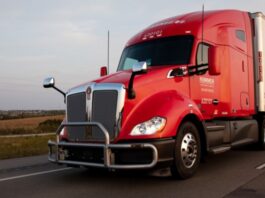Sharply higher construction costs over the past two years have contributed to slowing the exploration of widening Interstate 80 in Scott County, but they aren’t standing in the way of improvement plans for the Interstate 80 Corridor. Inflation has hit the rest of the economy, so it’s no surprise that the highway construction industry has […]
Already a subscriber? Log in
Want to Read More?
Get immediate, unlimited access to all subscriber content and much more.
Learn more in our subscriber FAQ.
- Unparalleled business coverage of the Iowa City / Cedar Rapids corridor.
- Immediate access to subscriber-only content on our website.
- 26 issues per year delivered digitally, in print or both.
- Support locally owned and operated journalism.
Do you want to read and share this article without a paywall?
Click here to purchase a paywall bypass linkSharply higher construction costs over the past two years have contributed to slowing the exploration of widening Interstate 80 in Scott County, but they aren’t standing in the way of improvement plans for the Interstate 80 Corridor.
Inflation has hit the rest of the economy, so it’s no surprise that the highway construction industry has been affected, too.
The Iowa DOT’s annual highway construction price trend index showed a 23.4% increase in costs in 2022, its highest jump since 2019.
Even the additional money from the 2021 federal infrastructure law didn’t go as far as initially hoped.
The DOT said 40% of the additional funds were allocated to covering increased costs for existing projects.
Inflation has cooled recently. The Federal Highway Administration’s June outlook said some input prices had actually declined, and that other indicators suggested better prices in the future. Meanwhile, the Iowa DOT’s first quarter price index, while prone to more variability than the annual figure, went up only 1% from the same period the year before.
Still, the trend toward higher costs over the past two years took its toll on the DOT’s five-year plan, which the state transportation commission approved in June.
“We had to delay 12 projects in that program and also identify some projects as not being fully funded just because of the significant increase across the board in all of our construction costs,” Stuart Anderson, director of the DOT’s transportation development division, said. The $4.3 billion plan runs from 2024 to 2028.
Mr. Anderson said it’s difficult to predict future cost changes in Iowa, but the agency is hopeful prices have stabilized and will remain that way.
“If highway construction costs continue to remain stable, our lettings should continue to be close to our programmed cost estimates which will help as we begin working on the next five-year program,” he said.
